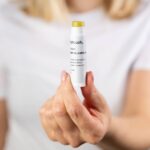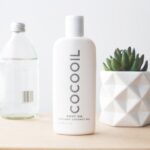Exfoliation is a crucial step in any skincare routine, especially after laser hair removal. It involves the removal of dead skin cells from the surface of the skin, which can help to improve the overall appearance and health of the skin. When dead skin cells build up on the skin’s surface, it can lead to a dull complexion, clogged pores, and an uneven skin tone. Exfoliation can help to unclog pores, prevent acne breakouts, and promote the growth of new, healthy skin cells. Additionally, exfoliation can help to improve the effectiveness of other skincare products, as it allows them to penetrate the skin more easily. After laser hair removal, exfoliation is particularly important as it can help to prevent ingrown hairs and promote smoother, more even results.
Exfoliation can be achieved through physical or chemical means. Physical exfoliation involves using a scrub or tool to physically remove dead skin cells from the surface of the skin. This can be done with a gentle scrub or a tool such as a loofah or exfoliating glove. Chemical exfoliation, on the other hand, involves using acids or enzymes to dissolve dead skin cells. This can be done with products containing ingredients such as alpha hydroxy acids (AHAs) or beta hydroxy acids (BHAs). Both methods can be effective, but it’s important to choose the right exfoliation method for your skin type and concerns.
The Benefits of Exfoliation After Laser Hair Removal
After laser hair removal, exfoliation can offer a range of benefits for the skin. One of the main benefits is that it can help to prevent ingrown hairs. When hair follicles become clogged with dead skin cells, it can lead to ingrown hairs, which can be painful and unsightly. Exfoliating the skin after laser hair removal can help to prevent this by removing dead skin cells and allowing hair to grow back more easily. Additionally, exfoliation can help to promote smoother, more even results from laser hair removal. By removing dead skin cells from the surface of the skin, exfoliation can help to reveal the new, hair-free skin underneath, leading to a more even and consistent appearance.
Exfoliation after laser hair removal can also help to improve the overall health and appearance of the skin. By removing dead skin cells, exfoliation can help to unclog pores, prevent acne breakouts, and promote a brighter, more radiant complexion. It can also help to improve the effectiveness of other skincare products, as it allows them to penetrate the skin more easily. Overall, exfoliation after laser hair removal can help to promote healthier, smoother, and more even-looking skin.
Choosing the Right Exfoliation Method for Aftercare
When it comes to choosing the right exfoliation method for aftercare following laser hair removal, it’s important to consider your skin type and concerns. Physical exfoliation involves using a scrub or tool to physically remove dead skin cells from the surface of the skin. This can be done with a gentle scrub or a tool such as a loofah or exfoliating glove. Physical exfoliation can be effective for most skin types, but it’s important to choose a gentle scrub and use light pressure to avoid irritating the skin. Chemical exfoliation, on the other hand, involves using acids or enzymes to dissolve dead skin cells. This can be done with products containing ingredients such as alpha hydroxy acids (AHAs) or beta hydroxy acids (BHAs). Chemical exfoliation can be particularly effective for those with acne-prone or sensitive skin, as it tends to be gentler and less abrasive than physical exfoliation.
It’s important to choose an exfoliation method that is gentle and non-irritating, especially in the days following laser hair removal. The skin may be more sensitive during this time, so it’s important to avoid harsh scrubs or abrasive tools that could cause irritation or damage. Additionally, it’s important to avoid over-exfoliating the skin, as this can lead to irritation and inflammation. It’s best to start with a gentle exfoliation method and gradually increase frequency and intensity as the skin becomes accustomed to it.
How Often Should You Exfoliate After Laser Hair Removal?
After laser hair removal, it’s important to exfoliate regularly to prevent ingrown hairs and promote smoother, more even results. However, it’s important not to overdo it, as this can lead to irritation and damage to the skin. In the days immediately following laser hair removal, it’s best to avoid exfoliating the treated area until any redness or irritation has subsided. Once the skin has healed, you can begin incorporating exfoliation into your post-laser hair removal routine. It’s best to start with gentle exfoliation once or twice a week and gradually increase frequency as the skin becomes accustomed to it.
The frequency of exfoliation after laser hair removal will depend on your individual skin type and concerns. Those with oily or acne-prone skin may benefit from more frequent exfoliation, while those with sensitive or dry skin may need to exfoliate less often. It’s important to pay attention to how your skin responds to exfoliation and adjust your routine accordingly. If you notice any signs of irritation or inflammation, it’s best to reduce the frequency of exfoliation or switch to a gentler method.
Tips for Safe and Effective Exfoliation After Laser Hair Removal
When exfoliating after laser hair removal, there are a few tips to keep in mind to ensure safe and effective results. First, it’s important to choose a gentle exfoliation method that is suitable for your skin type and concerns. This may involve using a gentle scrub or tool for physical exfoliation, or a product containing alpha hydroxy acids (AHAs) or beta hydroxy acids (BHAs) for chemical exfoliation. It’s also important to use light pressure and avoid over-exfoliating the skin, especially in the days following laser hair removal when the skin may be more sensitive.
It’s also important to moisturize the skin after exfoliating, as this can help to replenish moisture and prevent dryness or irritation. Using a gentle, hydrating moisturizer can help to soothe the skin and promote healing after exfoliation. Additionally, it’s important to protect the skin from sun exposure after exfoliating, as exfoliation can make the skin more susceptible to damage from UV rays. Using a broad-spectrum sunscreen with SPF 30 or higher can help to protect the skin from sunburn and premature aging.
Potential Risks and Precautions to Consider
While exfoliation can offer a range of benefits for the skin after laser hair removal, there are also potential risks and precautions to consider. One of the main risks is that over-exfoliating the skin can lead to irritation and damage. It’s important not to overdo it when it comes to exfoliation, especially in the days following laser hair removal when the skin may be more sensitive. Using harsh scrubs or abrasive tools can cause irritation and inflammation, so it’s best to start with a gentle exfoliation method and gradually increase frequency and intensity as the skin becomes accustomed to it.
Another potential risk is that chemical exfoliants containing alpha hydroxy acids (AHAs) or beta hydroxy acids (BHAs) can make the skin more susceptible to sun damage. These ingredients can increase sensitivity to UV rays, so it’s important to protect the skin from sun exposure after using them. Using a broad-spectrum sunscreen with SPF 30 or higher can help to protect the skin from sunburn and premature aging. Additionally, those with sensitive or reactive skin may need to be particularly cautious when it comes to exfoliation after laser hair removal. It’s best to patch test any new products or methods before using them on larger areas of the skin.
Incorporating Exfoliation into Your Post-Laser Hair Removal Routine
Incorporating exfoliation into your post-laser hair removal routine can help to promote smoother, more even results and prevent ingrown hairs. After laser hair removal, it’s best to wait until any redness or irritation has subsided before beginning an exfoliation routine. Once the skin has healed, you can start incorporating gentle exfoliation once or twice a week and gradually increase frequency as the skin becomes accustomed to it. It’s important not to overdo it when it comes to exfoliation, as this can lead to irritation and damage.
In addition to regular exfoliation, it’s important to moisturize the skin after exfoliating to replenish moisture and prevent dryness or irritation. Using a gentle, hydrating moisturizer can help to soothe the skin and promote healing after exfoliation. It’s also important to protect the skin from sun exposure after exfoliating, as exfoliation can make the skin more susceptible to damage from UV rays. Using a broad-spectrum sunscreen with SPF 30 or higher can help to protect the skin from sunburn and premature aging. Overall, incorporating regular exfoliation into your post-laser hair removal routine can help to promote healthier, smoother, and more even-looking skin.






